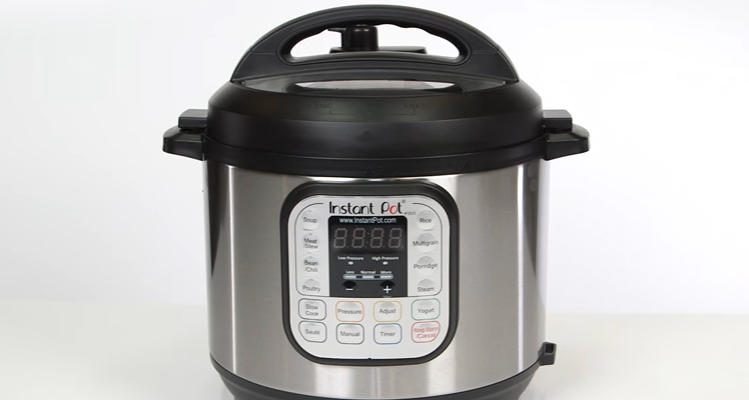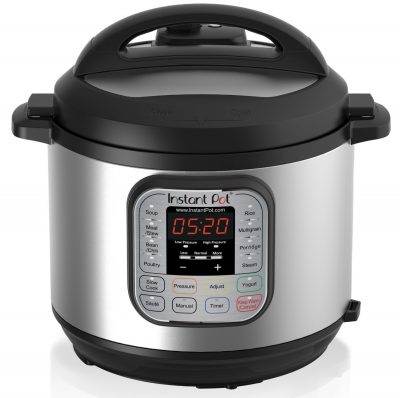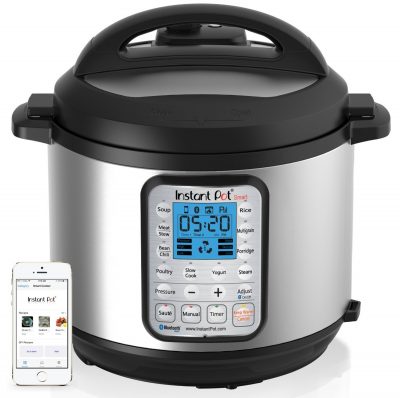
Instant Pot has made cooking easier with instant cooking. It makes healthy and nutritious food using 70% less energy in a fraction of the time compared to other cooking methods. Instant Pot has been designed with safety and dependability in mind. However, before using the Instant Pot, keep in mind these Instant Pot safety tips to prevent hazards.
8 Instant Pot Safety Tips
1. Don’t leave it unattended
Always ensure you are at home when the Instant Pot is cooking. It must go up to pressure. In case it doesn’t, check for any openings leading to steam leaks. Also ensure that the venting knob is turned to the sealing position when cooking.
2. Check water content
Instant Pot needs one cup of liquid to get to and maintain pressure. The liquid can be anything—meat juice, vinegar, water, or chicken stock. If there is not enough liquid, or if the liquid is too thick, Instant Pot will not generate enough steam.
Always add thickeners like cornstarch, arrowhead, flour, or potato starch after you are done with pressure cooking. On the other hand, if there is too much cooking liquid, the cooking time will increase and food will get overcooked. More liquid will also dilute the seasoning.
3. Don’t force open lid
Do not force open the Instant Pot pressure cooker’s lid to prevent burns. It is recommended to keep your face and hands away from the steam when it is being released.
4. Avoid over-filling
Do not fill the inner pot more than half way with foods that expand during cooking such as rice, one-pot pasta, congee, oats, cornmeal, and beans. If you do, the Instant Pot will splatter the food. The max line indicated on Instant Pot’s inner pot is not intended for pressure cooking. Even while cooking other food items, the pot must only be two-thirds full. Overfilling the pot will risk clogging the venting knob.
Instant Pot IP-DUO60 7-in-1 Multi-Functional Pressure Cooker, 6Qt/1000W
Click here to buy
5. Stay away from the steam
When opening the Instant Pot, always tilt the lid away from yourself. When doing a quick release, wear waterproof and heat resistant silicone gloves to avoid burns.
6. Wash the lid regularly
Wash the lid, clean the anti-block shield, and the inner pot after every use. Check the ring and look for any food residue inside the anti-block shield. The ring must be in good shape. The silicone sealing ring needs to be replaced every 18 to 24 months. Avoid using sealing rings with cracks, cuts or other damage.
7. Don’t put it on the stovetop
To prevent accidentally burning and melting the Instant Pot on the stovetop, lay a wooden board between the stovetop and Instant Pot.
8. High-temperature build up
Due to factors such as a missing inner pot, the inner pot having a heat dissipation problem, or if it’s not in proper contact with the heating element, excessive temperature may build up. Insufficient water will also lead to overheating of the Instant Pot. The Instant Pot has a safety feature to stop overheating when the temperature reaches a certain limit.
Instant Pot IP-Smart Bluetooth-Enabled Multifunctional Pressure Cooker, Stainless Steel
We hope you love the products we recommend! Just so you know, FoodsForBetterHealth may collect a small share of sales from the links on this page.
Sources:
“7 Simple Instant Pot Pressure Cooker Safety Tips,” Pressure Cook Recipes; http://www.pressurecookrecipes.com/instant-pot-pressure-cooker-safety-101/, last accessed February 16, 2017.
“10 Common Mistakes You Can Avoid as New Instant Pot User,” Pressure Cook Recipes web site;
http://www.pressurecookrecipes.com/instant-pot-users-common-mistakes/, last accessed February 16, 2017.
“Instant Pot,” Instant Pot web site; http://instantpot.com/benefits/safety-features/, last accessed February 16, 2017.















